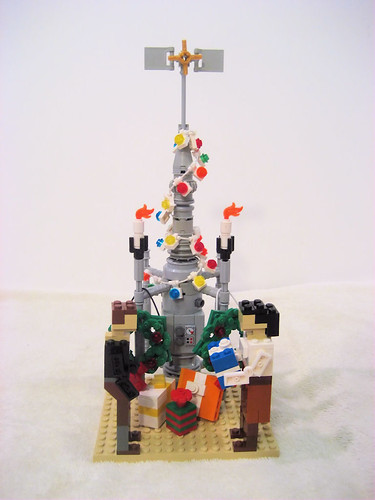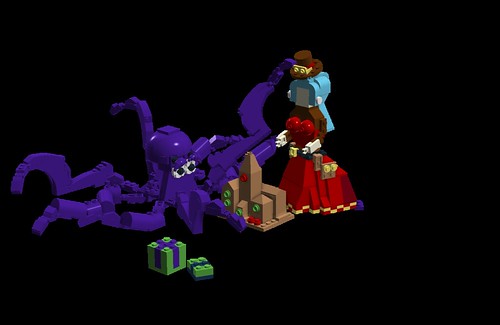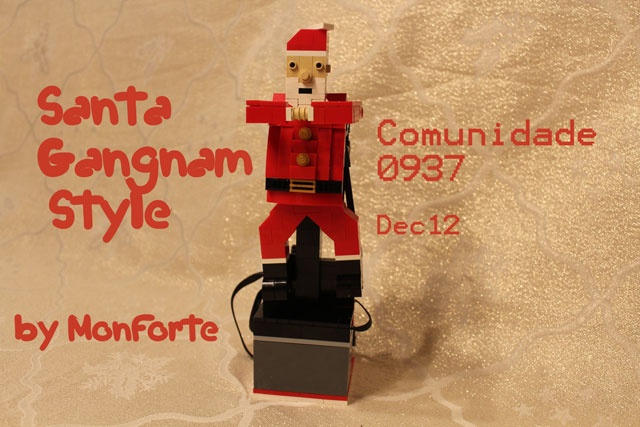
| Please visit the other 'Bricks' blogs: |
|
Tuesday, December 25, 2012
Monday, December 24, 2012
Sunday, December 23, 2012
Saturday, December 22, 2012
Book Review: LEGO Ideas Book - Unlock Your Imagination
Last in a series of book reviews. You've got two days left. Run out and buy your loved ones some LEGO books!
LEGO Ideas Book - Unlock Your Imagination by Daniel Lipkowitz, 2011, Dorling Kindersley Books.
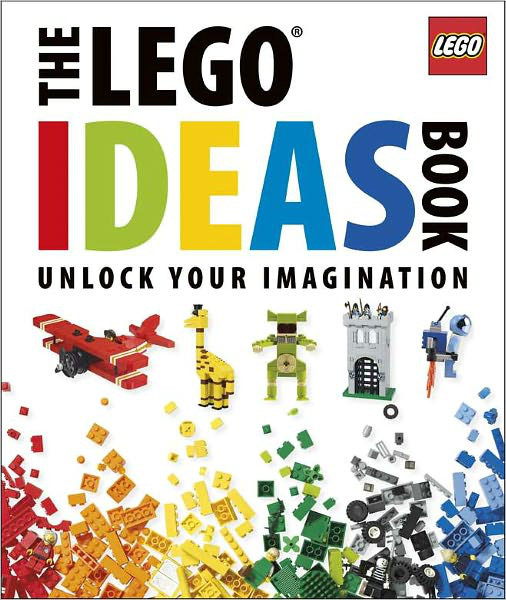
I'm very happy to end this run of LEGO book reviews with another extremely positive rating. This one's been out for a year, so you may already have it. If you were only going to buy one LEGO book last year, this was the one. If you didn't, you still have time to rectify the situation. As with the LEGO Adventure Book, this book seeks to inspire your building by simply showing you what you can do with the brick.
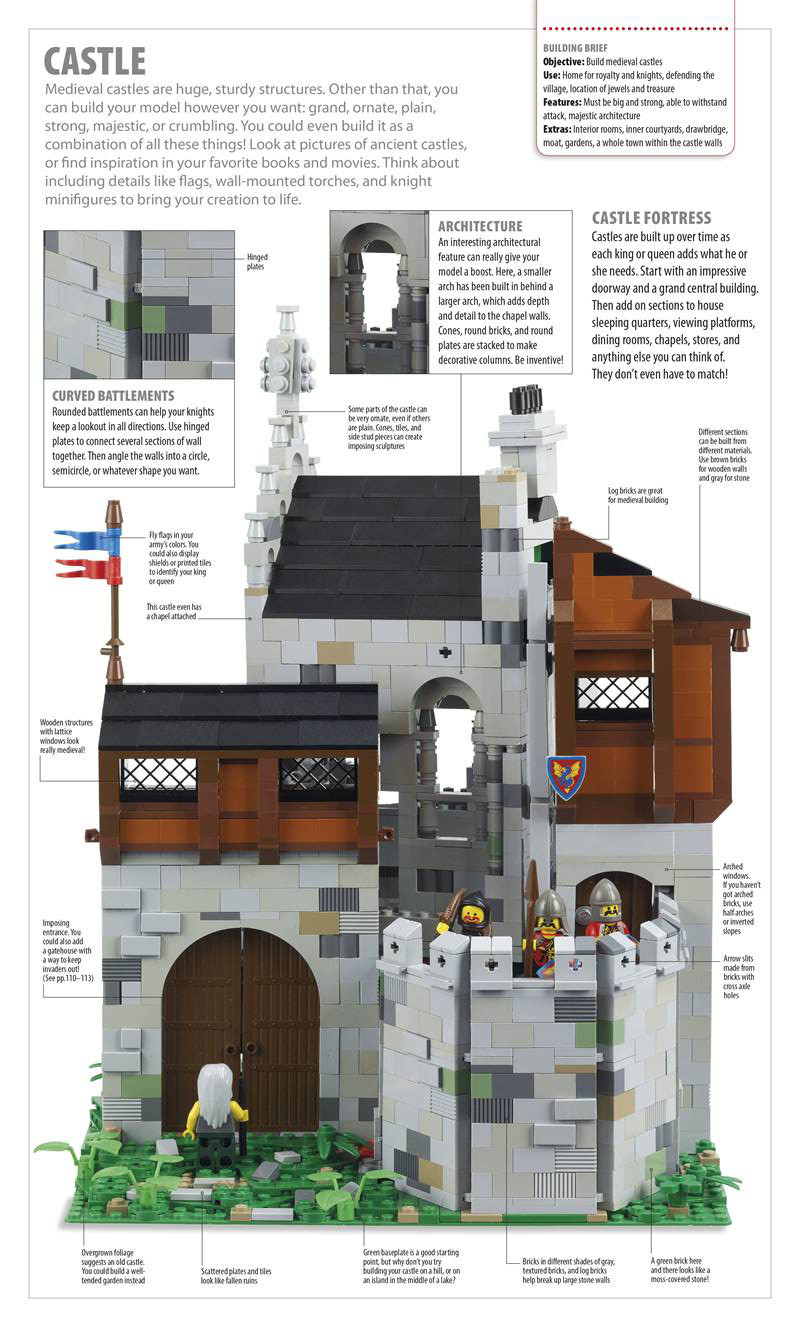
Author and editor Daniel Lipkowitz brings together an impressive array of AFOL contributors: Sebastian Arts (AlienCat), Tim Goddard (Rogue Bantha), Deborah Higdon, Barney Main (SlyOwl), Duncan Titmarsh and Andrew Walker. These builders made a ton of models for this book. I didn't bother counting them, but there are 200 pages, and almost page has several different models, all beautifully photographed.
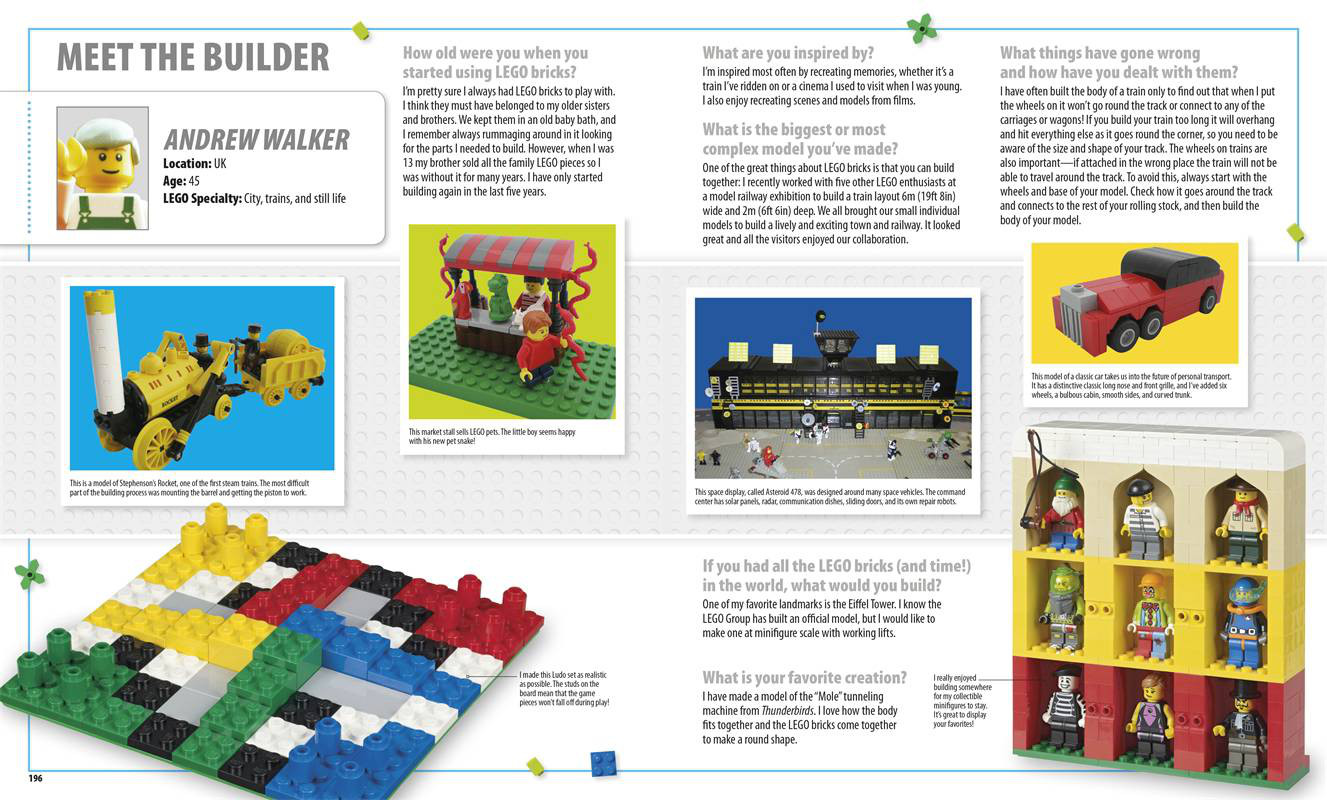
There are no real instructions in the book. Oh, in a few places they include exploded constructions so you can see how this or that detail was done, but the stated purpose of the book is: "The ideas in this book will inspire you to create many more models of your own." And the models are inspirational. Subjects include castles (lots of this - thanks AlienCat!), town buildings, brick built animals, space ships, robots, pirate fortresses, Viking longboats, etc. It's not all fig scale, either. There's quite a bit of microscale, mosaics, and also some sculptures that serve purposes like pen holders for your desktop. There are mini interviews with each of the builders, which is a nice touch. There is also text on each page giving little insights and highlighting details, but truth be told the text is unnecessary. The stars here are the photos. As with all of the various DK LEGO offerings, each page is packed with high quality color photos. I'd love to see more and more books like this (and the LEGO Adventure Book I reviewed previously) that celebrate all of the cool things that AFOLs build. I hope DK comes out with one of these every couple of years - just bring together some top quality builders and let them loose. I'd be happy to give them a list of names!

Again, this is one of those must-have books. Everyone from kids to expert builders will love flipping through the pages - whether they are seeking inspiration for their next MOC, they want to celebrate the community of builders, or just to enjoy all of the beautiful pictures.
MinilandBricks-specific content - Surprisingly I don't see any minilanders in the book.
LEGO Ideas Book - Unlock Your Imagination by Daniel Lipkowitz, 2011, Dorling Kindersley Books.

I'm very happy to end this run of LEGO book reviews with another extremely positive rating. This one's been out for a year, so you may already have it. If you were only going to buy one LEGO book last year, this was the one. If you didn't, you still have time to rectify the situation. As with the LEGO Adventure Book, this book seeks to inspire your building by simply showing you what you can do with the brick.

Author and editor Daniel Lipkowitz brings together an impressive array of AFOL contributors: Sebastian Arts (AlienCat), Tim Goddard (Rogue Bantha), Deborah Higdon, Barney Main (SlyOwl), Duncan Titmarsh and Andrew Walker. These builders made a ton of models for this book. I didn't bother counting them, but there are 200 pages, and almost page has several different models, all beautifully photographed.

There are no real instructions in the book. Oh, in a few places they include exploded constructions so you can see how this or that detail was done, but the stated purpose of the book is: "The ideas in this book will inspire you to create many more models of your own." And the models are inspirational. Subjects include castles (lots of this - thanks AlienCat!), town buildings, brick built animals, space ships, robots, pirate fortresses, Viking longboats, etc. It's not all fig scale, either. There's quite a bit of microscale, mosaics, and also some sculptures that serve purposes like pen holders for your desktop. There are mini interviews with each of the builders, which is a nice touch. There is also text on each page giving little insights and highlighting details, but truth be told the text is unnecessary. The stars here are the photos. As with all of the various DK LEGO offerings, each page is packed with high quality color photos. I'd love to see more and more books like this (and the LEGO Adventure Book I reviewed previously) that celebrate all of the cool things that AFOLs build. I hope DK comes out with one of these every couple of years - just bring together some top quality builders and let them loose. I'd be happy to give them a list of names!

Again, this is one of those must-have books. Everyone from kids to expert builders will love flipping through the pages - whether they are seeking inspiration for their next MOC, they want to celebrate the community of builders, or just to enjoy all of the beautiful pictures.
MinilandBricks-specific content - Surprisingly I don't see any minilanders in the book.
Book Review: Amazing ABC
Amazing ABC by Sean Kenney, 2012, Christy Ottaviano Books.

A quick little review of a book you are probably unlikely to have happened across. If you don't have a very young child, you probably don't browse the board book section of your local bookstore. I do, and one day a little while ago I happened across this charming book. I'm a fan of alphabet books, and of course when you're teaching a child their letters you see a lot of these. This book is pretty straight-forward. Each page has a letter (built of bricks) and a model to illustrate that letter. As you'd expect from Sean, the models are all great and the photos are perfect. Even if you don't have a little one crawling around your home, this is a great book to get (hey, it's only a few dollars) and have sitting out in your home. If you do have kids, you can justify this as educational even!
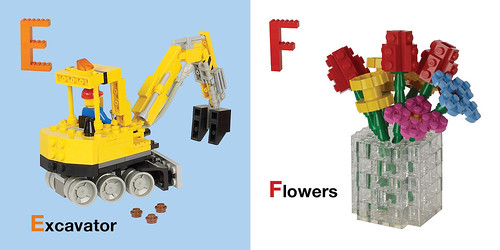
Blog-specific material - There is none.

A quick little review of a book you are probably unlikely to have happened across. If you don't have a very young child, you probably don't browse the board book section of your local bookstore. I do, and one day a little while ago I happened across this charming book. I'm a fan of alphabet books, and of course when you're teaching a child their letters you see a lot of these. This book is pretty straight-forward. Each page has a letter (built of bricks) and a model to illustrate that letter. As you'd expect from Sean, the models are all great and the photos are perfect. Even if you don't have a little one crawling around your home, this is a great book to get (hey, it's only a few dollars) and have sitting out in your home. If you do have kids, you can justify this as educational even!

Blog-specific material - There is none.
Friday, December 21, 2012
Book Review: I LEGO NY
I LEGO NY by Christoph Niemann, 2010, Abrams Image.

Christoph Niemann is an artist whose work has been on the cover of the New Yorker, Wired, The New York Times Magazine and American Illustration. He's got a regular New York Times pictorial column, Abstract Sunday that takes a really fun whimsical outlook on the world. At one point he lived (or still does, I'm not sure) in Berlin, but his thoughts were stuck in New York City. A few years ago he was playing LEGO with his sons and started making some models of his home town. The result was a column I LEGO NY.

873 comments later, he knew he'd hit upon something. He made some more models, and the result was the book I LEGO NY. This little thirty page board book is full of whimsical models that celebrate New York City life. The thing to note, though, is that this really isn't a LEGO book. It's a New York book. As a set of LEGO models, there's not much here. The arrangement of simple blocks evokes they subject matter rather than depicts it, as, for example, a cluster of 1x2 bricks representing a traffic jam at the entry to the Holland Tunnel.

The people that would most appreciate the allusions are New Yorkers, or probably even more so New York expatriates who miss their home. However, even as someone who has only been to New York for a few brief visits, the city is so much in the American consciousness from the numerous TV shows and movies set there that I understood all of the references.
Even though this is a board book, it's not for kids. Not that there is anything objectionable to the content, it's just that kids would not get the point of the pictures - they're just too abstract. I suspect that this is a board book to give it a little heft. At only thirty pages, as a paper book it would be little more than a pamphlet.

This is a fun little book. More of a stocking stuffer gift for that New Yorker in your life. It's a nice little conversation starter to leave out on your coffee table.

MinilandBricks-specific content A couple of the MOCs depict feet that are roughly miniland scale.

Christoph Niemann is an artist whose work has been on the cover of the New Yorker, Wired, The New York Times Magazine and American Illustration. He's got a regular New York Times pictorial column, Abstract Sunday that takes a really fun whimsical outlook on the world. At one point he lived (or still does, I'm not sure) in Berlin, but his thoughts were stuck in New York City. A few years ago he was playing LEGO with his sons and started making some models of his home town. The result was a column I LEGO NY.

873 comments later, he knew he'd hit upon something. He made some more models, and the result was the book I LEGO NY. This little thirty page board book is full of whimsical models that celebrate New York City life. The thing to note, though, is that this really isn't a LEGO book. It's a New York book. As a set of LEGO models, there's not much here. The arrangement of simple blocks evokes they subject matter rather than depicts it, as, for example, a cluster of 1x2 bricks representing a traffic jam at the entry to the Holland Tunnel.

The people that would most appreciate the allusions are New Yorkers, or probably even more so New York expatriates who miss their home. However, even as someone who has only been to New York for a few brief visits, the city is so much in the American consciousness from the numerous TV shows and movies set there that I understood all of the references.
Even though this is a board book, it's not for kids. Not that there is anything objectionable to the content, it's just that kids would not get the point of the pictures - they're just too abstract. I suspect that this is a board book to give it a little heft. At only thirty pages, as a paper book it would be little more than a pamphlet.

This is a fun little book. More of a stocking stuffer gift for that New Yorker in your life. It's a nice little conversation starter to leave out on your coffee table.

MinilandBricks-specific content A couple of the MOCs depict feet that are roughly miniland scale.
Book Review: LEGO Heavy Weapons
Still more book reviews.
LEGO Heavy Weapons by Jack Streat, 2012, No Starch Press.
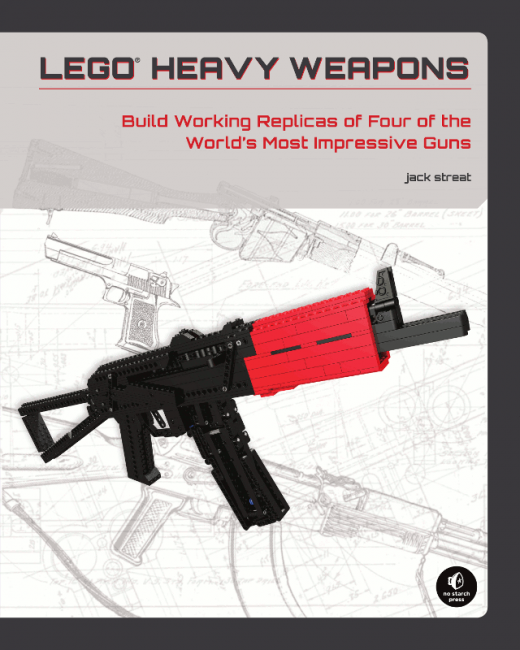
I have very little to say about this book. That's in part because it isn't really my thing, and in part because the book is exactly what it sets out to be. The subtitle is "Build Working Replicas of Four of the World's Most Impressive Guns", and this book is essentially a series of detailed instructions to make these four guns.
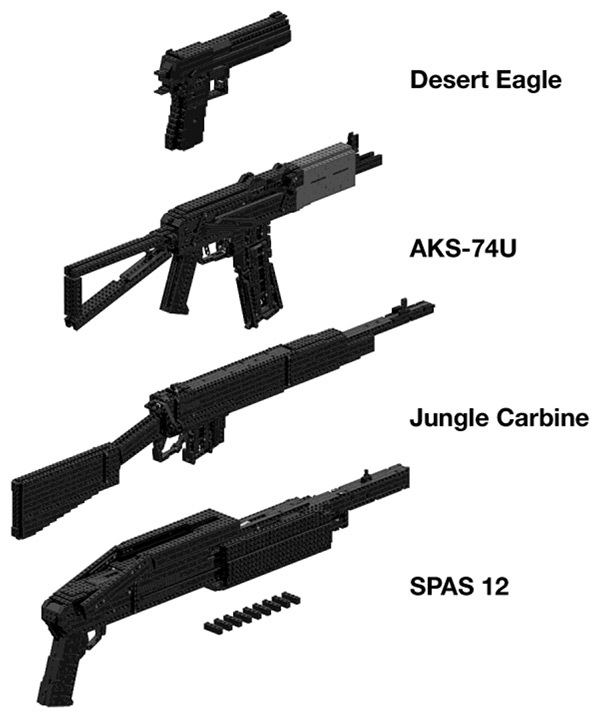
There is a little bit of background on building LEGO, how to buy pieces, designing with CAD programs, and Streat also gives some background on each of the weapons featured. Streat then launches into the heart of the book, detailed step-by-step instructions to build your own. The pictures are all in black and white, but that's okay, since you would probably build these out of black anyway. The instructions are clear and easy to follow. When completed, these guns are rubber-band driven to launch bricks. I haven't actually built them, so I can't tell you how far they shoot.

As I said, I don't really have much to say about this book. I fear it's a little dismissive to say 'If this is the sort of thing you like, then you will like this sort of thing,' but that's my honest response. If you want to make life-size weapons, this book is perfect for you. If not, pass it by. I suppose I could go on and on about gun play in general. I'm writing this review in the aftermath of the horrible school shooting in Newton, so anything with guns seems wrong right now. But I also know that I spent my childhood making guns out of sticks and shooting squirt guns, and later 22's at camp. Now my son loves sticking about five DUPLO bricks and calling it a shooter, and we bought him a Nerf dart gun for Christmas. So I'm not going to act all holier-than-thou on the subject of toy weapons. Boys, and to a lesser extent girls, fairly naturally gravitate to toy guns (or bows and arrows, or swords, etc etc), and building them out of LEGO is a pretty natural thing. Anyway, as I said, this book is aimed at a pretty narrow market, but perfectly hits that market. Make your purchasing choices accordingly.

Blog-specific material There is none.
LEGO Heavy Weapons by Jack Streat, 2012, No Starch Press.

I have very little to say about this book. That's in part because it isn't really my thing, and in part because the book is exactly what it sets out to be. The subtitle is "Build Working Replicas of Four of the World's Most Impressive Guns", and this book is essentially a series of detailed instructions to make these four guns.

There is a little bit of background on building LEGO, how to buy pieces, designing with CAD programs, and Streat also gives some background on each of the weapons featured. Streat then launches into the heart of the book, detailed step-by-step instructions to build your own. The pictures are all in black and white, but that's okay, since you would probably build these out of black anyway. The instructions are clear and easy to follow. When completed, these guns are rubber-band driven to launch bricks. I haven't actually built them, so I can't tell you how far they shoot.

As I said, I don't really have much to say about this book. I fear it's a little dismissive to say 'If this is the sort of thing you like, then you will like this sort of thing,' but that's my honest response. If you want to make life-size weapons, this book is perfect for you. If not, pass it by. I suppose I could go on and on about gun play in general. I'm writing this review in the aftermath of the horrible school shooting in Newton, so anything with guns seems wrong right now. But I also know that I spent my childhood making guns out of sticks and shooting squirt guns, and later 22's at camp. Now my son loves sticking about five DUPLO bricks and calling it a shooter, and we bought him a Nerf dart gun for Christmas. So I'm not going to act all holier-than-thou on the subject of toy weapons. Boys, and to a lesser extent girls, fairly naturally gravitate to toy guns (or bows and arrows, or swords, etc etc), and building them out of LEGO is a pretty natural thing. Anyway, as I said, this book is aimed at a pretty narrow market, but perfectly hits that market. Make your purchasing choices accordingly.

Blog-specific material There is none.
Book Review: The Cult of LEGO
Another book review. I'm posting these across my blogs, with blog-specific content at the end.
The Cult of LEGO, John Baichtal and Joe Meno, 2011, No Starch Press.

Okay, I'm embarrassed. I've had this one sitting here to review for just about a year now. I've been hesitant because I didn't want to be negative, but I suppose that's not a concern one should have in reviewing books. The thing is, from the point I first heard of this book, I wanted to love it. And, don't get me wrong, there is so much to love about this book. And before I go any further on a negative note, I want to start out celebrating what I love about this. We all know Joe as the founder and editor of BrickJournal, and a look at his Flickr stream reveals that he can be found at just about every gathering of more than five AFOLs, snapping picture after picture of all the great MOCs in the community. And the photos here are stunning - both those by Joe at fan events and photos chosen from builders across the community. This book tries to comprehensively cover all aspects of the hobby. The text by John Baichtal starts with a history of the company, then goes into all different areas, like different themes, spotlights on builders, NXT building, brick comics, LEGO in education, fan fests, micro macro sculpture and figs, Legoland parks, customization, Lugnet, and pretty much anything else you can think of.
There, I suppose is what bothered me. I love the photos. Yes, with anything like this you're going to quibble with 'why did they include this and not the five thousand other MOCs that they should have?' I suppose part of this comes down to taste, or luck, or maybe just which builders gave permission to use their photos. The text, though, tries to do too much, and it doing so it falls kind of flat. The style is more reporting, and lacks the personal feel we get in something like Jonathan Bender's LEGO: A Love Story. Actually, this book works best as the illustrations that were missing from Bender's book. In addition to the lack of a real emotional connection, there are odd inclusions and exclusions. I completely understand how a favorite MOC can be overlooked, but there are some glaring omissions in the text. For instance, the Castle theme gets less than a page (with a few additional MOCs that show up elsewhere). This is much less coverage than some individual builders or MOCs. Now, I'm a castle guy, so maybe I'm being sensitive to my favorite area of building, but Castle is one of the 'big three' themes along with Town and Space. Also, the coverage of the online community is sorely lacking. If you read this, you'd think that the community consists primarily of Lugnet and the Brothers-Brick. Miniland building is another shortfall. Sure, there aren't a ton of people who build in this scale, but it's at the heart of the theme parks, and in the book miniland figures get about a third as much space as Homemaker and Belville figs. Some inclusions are odd. There seems to be a huge emphasis on FFOLs. I'm not complaining about including women builders prominently, but it seems a bit agenda driven - trying to prove that LEGO isn't just for boys. There are also some individuals who get featured again and again - no knock on them, but it just seems that there are so many who get overlooked that to put a lot of attention on a few seems misplaced. The book does cover some areas that are left out of other LEGO books I've seen, like First LEGO League and Serious Play. I guess part of the problem is that there is no narrative thread that runs through the book. It's more like a scatter-shot of short pieces that tries to cover everything, but is inevitably hit and miss.
I'm really sorry to be negative on this book, which is why I've put off reviewing it. I do think that as a peek into the community it works well, and as a coffee table book to pick up and flip through the pictures, but to sit down and read to get some comprehensive insight I think it falls short of the high mark it set for itself. Anyway, if you're into LEGO books, you probably already have this. If you don't, I might turn first to one of the other books on the market.
MinilandBricks specific content - As noted above, there's precious little. There is one little 2-page feature on non-minifig figs, and Minilanders get this:
The Cult of LEGO, John Baichtal and Joe Meno, 2011, No Starch Press.

Okay, I'm embarrassed. I've had this one sitting here to review for just about a year now. I've been hesitant because I didn't want to be negative, but I suppose that's not a concern one should have in reviewing books. The thing is, from the point I first heard of this book, I wanted to love it. And, don't get me wrong, there is so much to love about this book. And before I go any further on a negative note, I want to start out celebrating what I love about this. We all know Joe as the founder and editor of BrickJournal, and a look at his Flickr stream reveals that he can be found at just about every gathering of more than five AFOLs, snapping picture after picture of all the great MOCs in the community. And the photos here are stunning - both those by Joe at fan events and photos chosen from builders across the community. This book tries to comprehensively cover all aspects of the hobby. The text by John Baichtal starts with a history of the company, then goes into all different areas, like different themes, spotlights on builders, NXT building, brick comics, LEGO in education, fan fests, micro macro sculpture and figs, Legoland parks, customization, Lugnet, and pretty much anything else you can think of.
There, I suppose is what bothered me. I love the photos. Yes, with anything like this you're going to quibble with 'why did they include this and not the five thousand other MOCs that they should have?' I suppose part of this comes down to taste, or luck, or maybe just which builders gave permission to use their photos. The text, though, tries to do too much, and it doing so it falls kind of flat. The style is more reporting, and lacks the personal feel we get in something like Jonathan Bender's LEGO: A Love Story. Actually, this book works best as the illustrations that were missing from Bender's book. In addition to the lack of a real emotional connection, there are odd inclusions and exclusions. I completely understand how a favorite MOC can be overlooked, but there are some glaring omissions in the text. For instance, the Castle theme gets less than a page (with a few additional MOCs that show up elsewhere). This is much less coverage than some individual builders or MOCs. Now, I'm a castle guy, so maybe I'm being sensitive to my favorite area of building, but Castle is one of the 'big three' themes along with Town and Space. Also, the coverage of the online community is sorely lacking. If you read this, you'd think that the community consists primarily of Lugnet and the Brothers-Brick. Miniland building is another shortfall. Sure, there aren't a ton of people who build in this scale, but it's at the heart of the theme parks, and in the book miniland figures get about a third as much space as Homemaker and Belville figs. Some inclusions are odd. There seems to be a huge emphasis on FFOLs. I'm not complaining about including women builders prominently, but it seems a bit agenda driven - trying to prove that LEGO isn't just for boys. There are also some individuals who get featured again and again - no knock on them, but it just seems that there are so many who get overlooked that to put a lot of attention on a few seems misplaced. The book does cover some areas that are left out of other LEGO books I've seen, like First LEGO League and Serious Play. I guess part of the problem is that there is no narrative thread that runs through the book. It's more like a scatter-shot of short pieces that tries to cover everything, but is inevitably hit and miss.
I'm really sorry to be negative on this book, which is why I've put off reviewing it. I do think that as a peek into the community it works well, and as a coffee table book to pick up and flip through the pictures, but to sit down and read to get some comprehensive insight I think it falls short of the high mark it set for itself. Anyway, if you're into LEGO books, you probably already have this. If you don't, I might turn first to one of the other books on the market.
MinilandBricks specific content - As noted above, there's precious little. There is one little 2-page feature on non-minifig figs, and Minilanders get this:
Miniland figures are in their own category because they populate LEGOLAND's Miniland. Built from individual elements rather than from specialized figure parts, they can be incredibly challenging to create. As such, casual builders avoid them, while experts consider a deftly constructed miniland figure to be a sign of utmost skill.And on the facing page there are two photos of Belville figs.
Thursday, December 20, 2012
Book Review: The LEGO Adventure Book
Next up in my series of LEGO book reviews for your last minute gift needs.
LEGO Adventure Book: Cars, Castles, Dinosaurs & More, Megan Rothrock, 2013, No Starch Press.
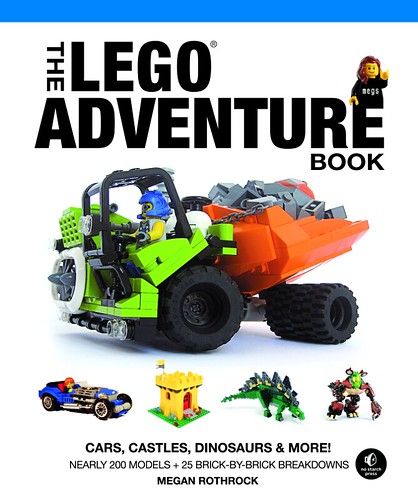
If you're only going to buy one LEGO book this year, this is the one to get. Editor Megan Rothrock is a well known member of the community, whose MOCs can be found on Flickr, and this book celebrates the community. Do you remember the LEGO Idea Books? Over the years LEGO released several of these booklets that went beyond the instruction sets found in any individual set. These books were a mix of instructions and just inspirational photos that could show you what you could build with enough time, practice, and, of course, more LEGO. Meg's book looks back to that tradition, and also celebrates the community.
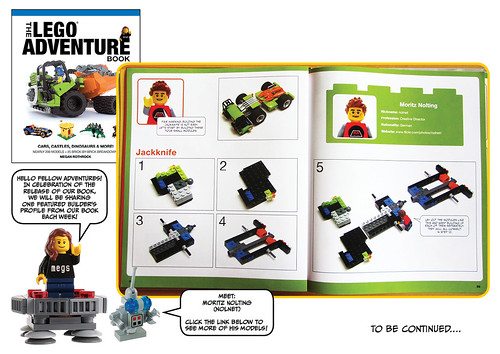
The book is mostly photos (all high quality). What text there is is primarily in comic book style, as Meg's sig-fig travels through the world of LEGO, meeting the sig-figs of other prominent builders and seeing their MOCs. In addition to Meg herself, featured builders come from all different areas of the LEGO community, both geographically and in terms of building theme: Craig Mandeville, Are J. Heiseldal, Moritz Nolting, Jon Hall, Pete Reid, Peter Morris, Mark Stafford, Aaron Andrews, Mike Psiaki, Katie Walker, Carl Greatrix, Sylvain Amacher and Daniel August Krentz.

The book is 200 pages long and contains 'nearly 200 example models from the world's best builders.' There are about 25 MOC breakdowns. Not exactly step-by-step instructions as you would get in an official set, but detailed photos at different stages of construction so that an experienced builder could reproduce the model without too much difficulty. Subject matter covers the gamut, from a dinosaur, to a classic castle, to trains car and town buildings, to robots, mecha, steampunk and space ships. This is pretty much all at fig scale (except arguably Pete Reid's turtle-bots).

Anyway, I give this one my highest recommendation. The proper audience is just about anyone. The kid starting out will see this as inspiration of all the cool things you can build. The intermediate builder will enjoy reproducing the models. The long-time AFOL will love the celebration of the community, including popular builders and fan-created themes. Perhaps the best part of this book is the fact that it is listed on No Starch as 'Volume 1', implying we've got a whole series of these to come. Perhaps in upcoming books we'll get as-yet missing themes, like Western, or other building scales like micro and miniland. I suspect that even now Meg is contacting people to be involved in future volumes, so I'll be excited to see where this goes in the future.

MinilandBricks-specific content - None.
LEGO Adventure Book: Cars, Castles, Dinosaurs & More, Megan Rothrock, 2013, No Starch Press.

If you're only going to buy one LEGO book this year, this is the one to get. Editor Megan Rothrock is a well known member of the community, whose MOCs can be found on Flickr, and this book celebrates the community. Do you remember the LEGO Idea Books? Over the years LEGO released several of these booklets that went beyond the instruction sets found in any individual set. These books were a mix of instructions and just inspirational photos that could show you what you could build with enough time, practice, and, of course, more LEGO. Meg's book looks back to that tradition, and also celebrates the community.

The book is mostly photos (all high quality). What text there is is primarily in comic book style, as Meg's sig-fig travels through the world of LEGO, meeting the sig-figs of other prominent builders and seeing their MOCs. In addition to Meg herself, featured builders come from all different areas of the LEGO community, both geographically and in terms of building theme: Craig Mandeville, Are J. Heiseldal, Moritz Nolting, Jon Hall, Pete Reid, Peter Morris, Mark Stafford, Aaron Andrews, Mike Psiaki, Katie Walker, Carl Greatrix, Sylvain Amacher and Daniel August Krentz.

The book is 200 pages long and contains 'nearly 200 example models from the world's best builders.' There are about 25 MOC breakdowns. Not exactly step-by-step instructions as you would get in an official set, but detailed photos at different stages of construction so that an experienced builder could reproduce the model without too much difficulty. Subject matter covers the gamut, from a dinosaur, to a classic castle, to trains car and town buildings, to robots, mecha, steampunk and space ships. This is pretty much all at fig scale (except arguably Pete Reid's turtle-bots).

Anyway, I give this one my highest recommendation. The proper audience is just about anyone. The kid starting out will see this as inspiration of all the cool things you can build. The intermediate builder will enjoy reproducing the models. The long-time AFOL will love the celebration of the community, including popular builders and fan-created themes. Perhaps the best part of this book is the fact that it is listed on No Starch as 'Volume 1', implying we've got a whole series of these to come. Perhaps in upcoming books we'll get as-yet missing themes, like Western, or other building scales like micro and miniland. I suspect that even now Meg is contacting people to be involved in future volumes, so I'll be excited to see where this goes in the future.

MinilandBricks-specific content - None.
Book Review: Unofficial LEGO Technic Builder's Guide
Next up in my series of book reviews as last minute presents for the AFOL in your life. I'm posting this same book review across most of my blogs, but I'm adding some blog-specific content at the end of each posting.
Unofficial LEGO Technic Builder's Guide by Paweł “Sariel” Kmieć, 2013, No Starch Press
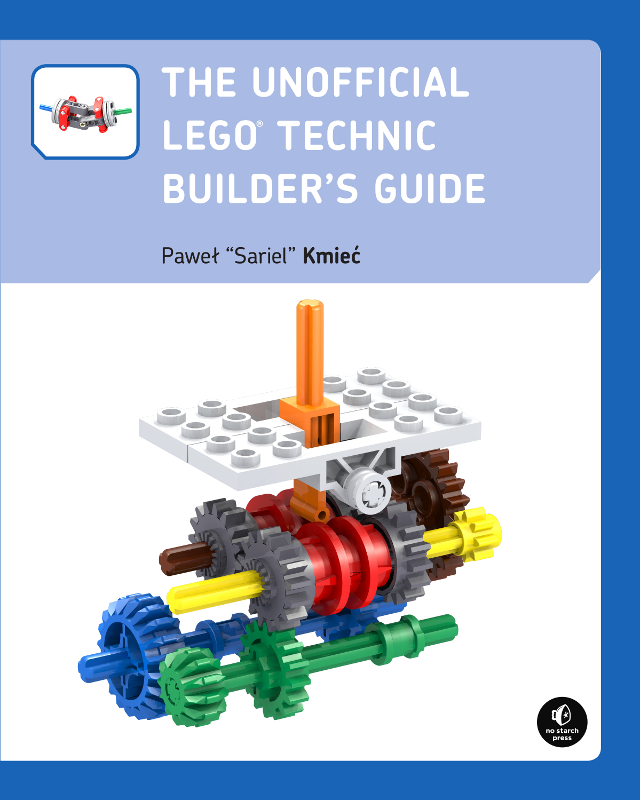
On the one hand I might not be the right person to review this book. Even though I have fond memories of my best friend getting what must have been set 956 oh so many years ago, and at one point I got the Technic Jango Fett as part of a large eBay Star Wars LEGO lot, about the only thing I regularly do with Technic elements is put a small gear on a rod to make a mace for my castle minifigs. On the other hand, I'm pretty much the perfect market for this book, which is well situated for the builder who is fairly competent with LEGO building but has no real experience with Technic. That said, even the expert Technic builder would surely find this to be an extremely useful book. The author, Paweł “Sariel” Kmieć, is a well-known Technic builder. He's active in LUGPol and contributes to various Technic or NXT themed sites. You're quite likely to have seen some of his amazing MOCs on the Brothers Brick or other community sites, and you can find them all on his own site, Sariel.pl. Eric "Blakbird" Albrecht of Blakbird's Technicopedia is listed as a tech reviewer and advisor, and he may have helped with the illustrations, though that is not made clear.
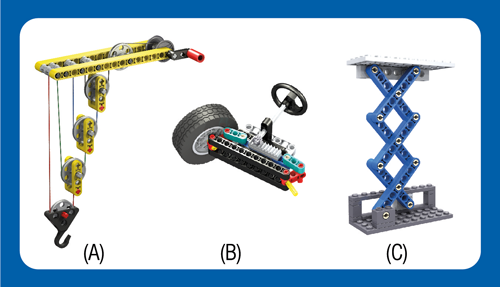
This book is a beautiful intro to Technic building. Almost every page is full of full color illustrations - some photos, but mostly LDRAW - that clearly illustrate the topics under consideration. Without a lot of fluff intro, Paweł jumps straight into a discussion of the basics of Technic building. He starts out with a quick introduction to concepts of physics and mechanics that underlie the complex creations, goes through a comprehensive discussion of different Technic elements and how they work, and by the end of the book works you through intricate mechanisms, such as a ten-speed synchronized transmission, or a heavy-duty pendular portal axle. The complete Table of Contents can be seen here. The writing style is very clear, so you don't have to start out as an expert car mechanic to enjoy this book (believe me - I barely know how to check my oil). Along the way Paweł includes a ton of information. For instance, he goes through every type of gear and shows how they work, or in another chapter he gives a complete description of the advantages and disadvantages of every LEGO motor.
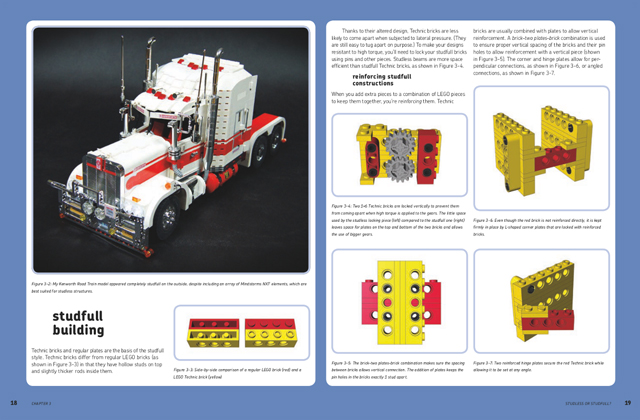
There are a couple of things that are not in this book. There is virtually nothing about Mindstorms or Mindstorms NXT, which are often grouped in with other Technic building. I actually don't think that's a failing, as to try and fit in a lot about programming and robotics would have necessarily led to a watering down of the content that is in this book. Also, No Starch has several other Mindstorms NXT books, which makes me think that this is part of a strategic plan to make a library of great reference works. The other thing that this book is not about is finished models. Yes, Paweł has a ton of photos of beautiful finished trucks, tanks, cranes and other models to inspire you, but he's not out to provide step-by-step instructions to make these. Instead he gives you step-by-step instructions to make the drive train, or steering mechanism, or other mechanics 'under the skin'. You can then build your own skin on top of this solid skeleton. Again, other No Starch offerings, such as these Technic Idea Books might be good to explore as a next step.
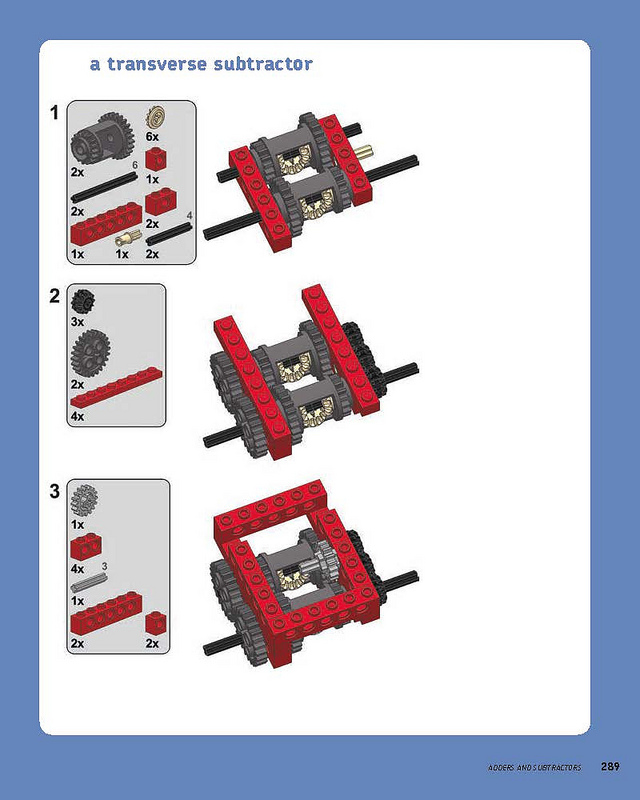
I would highly, highly, highly recommend this book (highly even) for anyone above the very introductory level builder. If you've never made a Technic model before but want to try, Paweł clearly teaches you from the ground up. If you're an expert Technic builder, you'll benefit from the comprehensive listings of different parts, and be able to adapt the complex mechanisms Paweł describes. Even if you've never had an interest in Technic, and those funny beams and half pins that occasionally show up in your System sets make their way into your 'useless parts bin' only to show up as an occasional greeble, you'll be inspired by this. Now I want to go dig into my own bin and pull out some gears and axles to play with!
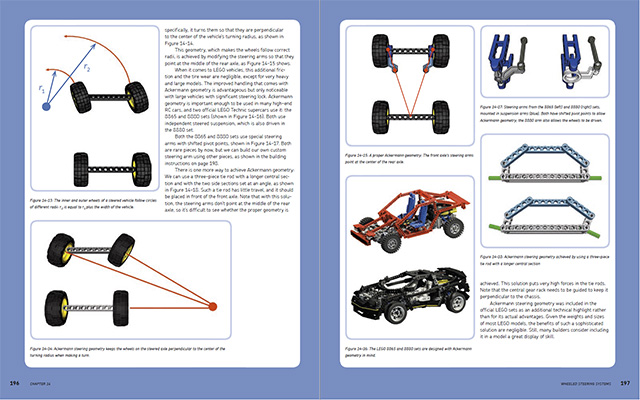
MinilandBricks-specific content None at all. I suppose the mechanics described here could be used in a MOC for any theme, but that part is up to you.
Unofficial LEGO Technic Builder's Guide by Paweł “Sariel” Kmieć, 2013, No Starch Press

On the one hand I might not be the right person to review this book. Even though I have fond memories of my best friend getting what must have been set 956 oh so many years ago, and at one point I got the Technic Jango Fett as part of a large eBay Star Wars LEGO lot, about the only thing I regularly do with Technic elements is put a small gear on a rod to make a mace for my castle minifigs. On the other hand, I'm pretty much the perfect market for this book, which is well situated for the builder who is fairly competent with LEGO building but has no real experience with Technic. That said, even the expert Technic builder would surely find this to be an extremely useful book. The author, Paweł “Sariel” Kmieć, is a well-known Technic builder. He's active in LUGPol and contributes to various Technic or NXT themed sites. You're quite likely to have seen some of his amazing MOCs on the Brothers Brick or other community sites, and you can find them all on his own site, Sariel.pl. Eric "Blakbird" Albrecht of Blakbird's Technicopedia is listed as a tech reviewer and advisor, and he may have helped with the illustrations, though that is not made clear.

This book is a beautiful intro to Technic building. Almost every page is full of full color illustrations - some photos, but mostly LDRAW - that clearly illustrate the topics under consideration. Without a lot of fluff intro, Paweł jumps straight into a discussion of the basics of Technic building. He starts out with a quick introduction to concepts of physics and mechanics that underlie the complex creations, goes through a comprehensive discussion of different Technic elements and how they work, and by the end of the book works you through intricate mechanisms, such as a ten-speed synchronized transmission, or a heavy-duty pendular portal axle. The complete Table of Contents can be seen here. The writing style is very clear, so you don't have to start out as an expert car mechanic to enjoy this book (believe me - I barely know how to check my oil). Along the way Paweł includes a ton of information. For instance, he goes through every type of gear and shows how they work, or in another chapter he gives a complete description of the advantages and disadvantages of every LEGO motor.

There are a couple of things that are not in this book. There is virtually nothing about Mindstorms or Mindstorms NXT, which are often grouped in with other Technic building. I actually don't think that's a failing, as to try and fit in a lot about programming and robotics would have necessarily led to a watering down of the content that is in this book. Also, No Starch has several other Mindstorms NXT books, which makes me think that this is part of a strategic plan to make a library of great reference works. The other thing that this book is not about is finished models. Yes, Paweł has a ton of photos of beautiful finished trucks, tanks, cranes and other models to inspire you, but he's not out to provide step-by-step instructions to make these. Instead he gives you step-by-step instructions to make the drive train, or steering mechanism, or other mechanics 'under the skin'. You can then build your own skin on top of this solid skeleton. Again, other No Starch offerings, such as these Technic Idea Books might be good to explore as a next step.

I would highly, highly, highly recommend this book (highly even) for anyone above the very introductory level builder. If you've never made a Technic model before but want to try, Paweł clearly teaches you from the ground up. If you're an expert Technic builder, you'll benefit from the comprehensive listings of different parts, and be able to adapt the complex mechanisms Paweł describes. Even if you've never had an interest in Technic, and those funny beams and half pins that occasionally show up in your System sets make their way into your 'useless parts bin' only to show up as an occasional greeble, you'll be inspired by this. Now I want to go dig into my own bin and pull out some gears and axles to play with!

MinilandBricks-specific content None at all. I suppose the mechanics described here could be used in a MOC for any theme, but that part is up to you.
Wednesday, December 19, 2012
Book review: The Unofficial LEGO Builder's Guide, 2nd ed
Next in my series of book reviews as last minute presents for the AFOL in your life. I'm posting this same book review across most of my blogs, but I'm adding some blog-specific content at the end of each posting.
The Unofficial LEGO Builder's Guide, 2nd ed by Allan Bedford, 2013, No Starch Press.

This book is by one of our own. Allan Bedford has been active in the LEGO community for a long time - his Lugnet postings go back to at least 1999. For about five years he maintained a blog, though it's dormant now. It seems that his online activity is now centered around his book's Facebook page. I think he's part of Torolug, though I don't see a list of members on their site. Allan's most ambitious LEGO project to date (aside from this book), is his 5000 piece replica of Toronto's CN Tower.
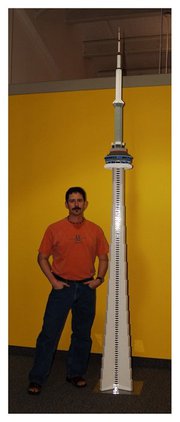
Anyway, back to the book. You may be familiar with the first edition of the Unofficial LEGO Builder's Guide, which came out in 2005. It's been revised and updated. I don't have the original on hand to compare, but I think the main change is that the illustrations have been redone and are now in color. I also note that newer elements have been added to the Brickopedia section (more on this below). Without a side-by-side comparison I don't know if there have been other changes to the text, though as I recall the original had the same chapters (please correct me if I'm wrong on this)
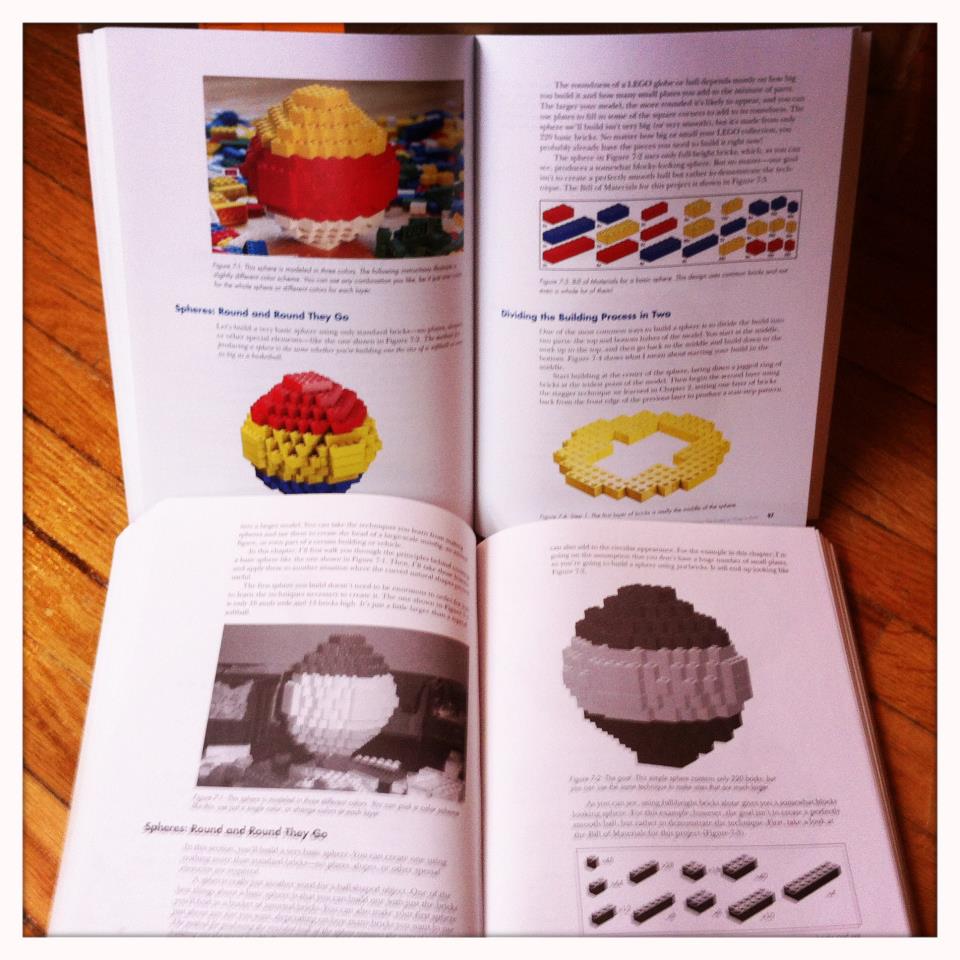
This book is written for someone who hasn't built many MOCs and wants to become an expert builder. This could be for a kid who wants to start building like an AFOL, or maybe for someone who has primarily collected official sets and now wants to move beyond the instructions. Even the experienced MOCer, though, can find new tips in these pages. The chapters tell you how to build well, including topics like choosing and designing a subject, simple tips to make your models more sturdy, discussions of scale, and creating round shapes out of square bricks.
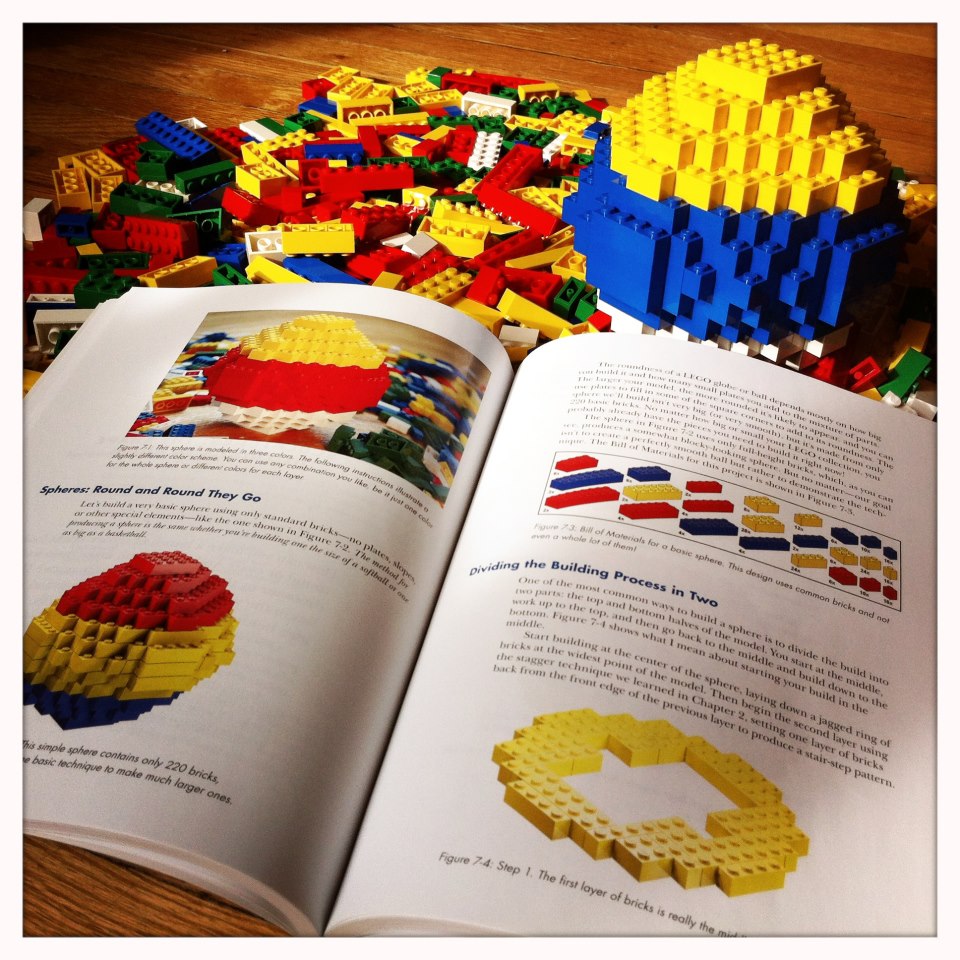
Here's a run through of the chapters. The LEGO System: Endless Possibilities, Back to the Basics: Tips and Techniques and Minifig Scale: Oh What a Wonderful Minifig World It Is! The first three chapters go through the basics, introducing bricks, studs and slopes; how they connect, tricks to make stronger walls, introducing curved walls, etc. He goes through the basic scale issues related to the ubiquitous minifig and gives directions to make a fig-scale train station. He even has a good discussion of making logical substitutions when you don't have exactly the right brick to use. Each chapter has a helpful summary of key lessons. One critique is that chapter two should have some discussion of SNOT building - there is some brief discussion later in the mosaic chapter, but it would be important to put in here. If Allan does a third edition I really hope he goes into more of this.
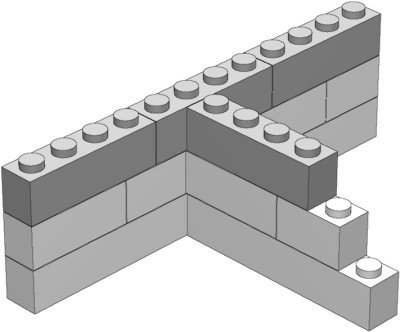
Miniland Scale: The Whole World in Miniature, Jumbo Elements: Building Bigger Bricks and Sculptures: The Shape of Things to Build. Chapters 4, 5 and 7 take us to scales larger than the minifig. His discussion of miniland building is very welcome, as this is overlooked in some other resources. He gives instructions to build a basic miniland figure, then shows how to make a diverse population by changing the clothes, poses, hair styles, etc. He also discusses making buildings for your minilanders. Jumbo Elements looks at a fairly niche area of building - those people who make giant size bricks or other elements out of LEGO. This chapter does have some good thoughts on the dimensions of the basic bricks even for those who are not into building gigantic elements. The sculpture chapter discusses making a round ball out of bricks and then goes into building a sculpture of the Sphinx. Here I note a critique based on the fact that Allan did not go back and change the text at all for this edition (presumably - again I do not have the first edition handy for a side-by-side comparison). I think any such guide written today would be lacking if it didn't include SNOT methods for getting rounded shapes. I'm especially thinking here of the Lowell sphere.
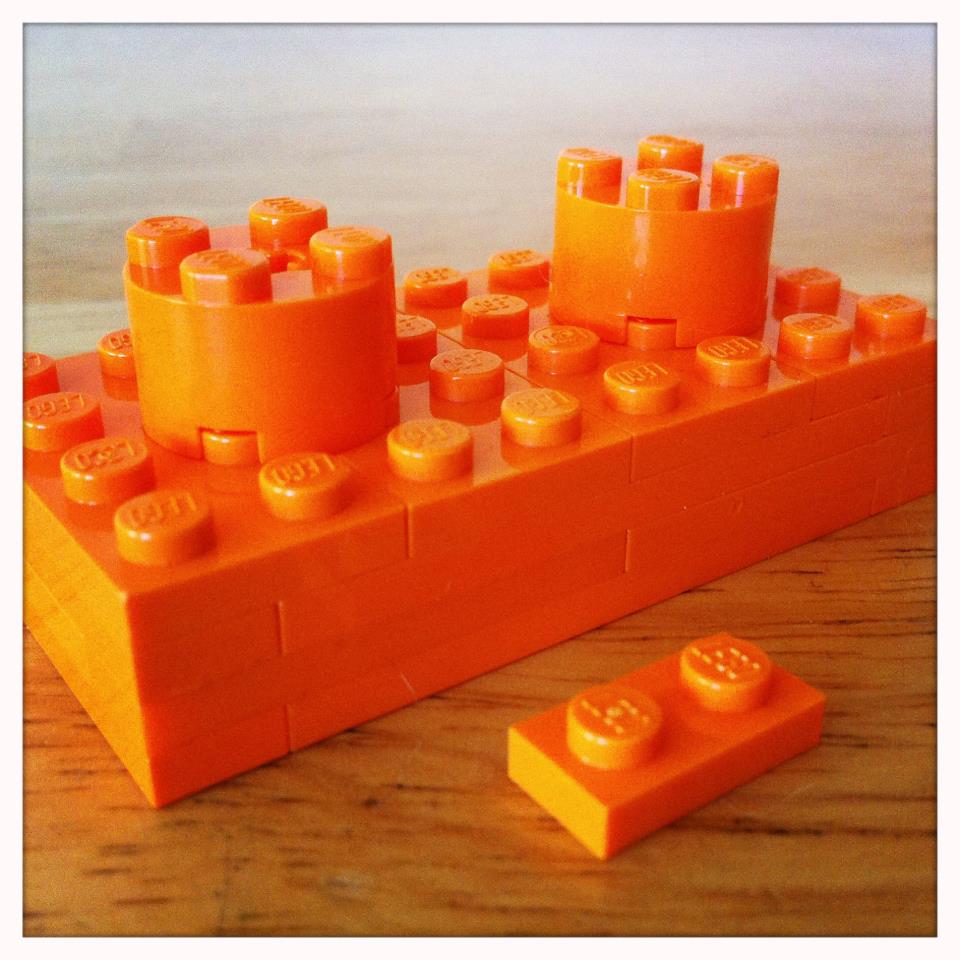
Microscale Building: More than Meets the Eye Chapter 6 goes through the basics of micro building, discussing the varying scales, compression of details, and gives instructions for building the Empire State Building. He also shows some great inspirational micro models such as a ship, a truck and a house. This whole chapter can be downloaded as a preview.

Mosaics: Patterns and Pictures in Bricks, Putting it All Together: Where Ideas Meet Bricks and Beyond Just Bricks: Other Ways to Enjoy the LEGO Hobby Chapters 8, 9 and 10 round out the book. Mosaics has a discussion of making mosaics two different ways (studs up and studs out). Putting it All Together goes through a building project from start to finish, including instructions for a Space Shuttle. Beyond Just Bricks addresses making your own building instructions and also building games out of LEGO. Of course LEGO builders have been making custom chess sets for a long time (I remember a version built by Suzanne Rich in the early days of Lugnet or even the rec.toys.lego days), but more recently LEGO has gotten in on the action with lots of brick-built games. It does seem like an updated edition of the book should have mentioned this last.

At the back there are two appendices. I'm not sure whether or not I think the Brickopedia, a guide to commonly used LEGO pieces, is particularly useful. It seems that you can get a lot more information on different LEGO elements by sending people to Peeron and BrickLink, but Allan does include some commentary on how each brick can be used. Design Grids: Building Better by Planning Ahead discusses using LEGO graph paper (both studs out and studs up version) in designing your MOCs. The text promises you can download this paper from the book website, but I have to admit that I cannot find it. It is, though, on Allan's older site.

In my opinion, this book is well worth buying for the beginning to intermediate MOC builder. The expert builder might still learn a few techniques, but probably knows the bulk of the material in this. On the other hand, expert AFOLs would probably be happy to get this to support one of our own and to encourage No Starch and other publishers to make more of this sort of thing. My only critique, as noted above, is that I think he should include more techniques, such as SNOT building.
MinilandBricks specific material - As discussed above, there is a great chapter on miniland building, including instructions on how to make a basic minilander and modify it to build a diverse population.
The Unofficial LEGO Builder's Guide, 2nd ed by Allan Bedford, 2013, No Starch Press.

This book is by one of our own. Allan Bedford has been active in the LEGO community for a long time - his Lugnet postings go back to at least 1999. For about five years he maintained a blog, though it's dormant now. It seems that his online activity is now centered around his book's Facebook page. I think he's part of Torolug, though I don't see a list of members on their site. Allan's most ambitious LEGO project to date (aside from this book), is his 5000 piece replica of Toronto's CN Tower.

Anyway, back to the book. You may be familiar with the first edition of the Unofficial LEGO Builder's Guide, which came out in 2005. It's been revised and updated. I don't have the original on hand to compare, but I think the main change is that the illustrations have been redone and are now in color. I also note that newer elements have been added to the Brickopedia section (more on this below). Without a side-by-side comparison I don't know if there have been other changes to the text, though as I recall the original had the same chapters (please correct me if I'm wrong on this)

This book is written for someone who hasn't built many MOCs and wants to become an expert builder. This could be for a kid who wants to start building like an AFOL, or maybe for someone who has primarily collected official sets and now wants to move beyond the instructions. Even the experienced MOCer, though, can find new tips in these pages. The chapters tell you how to build well, including topics like choosing and designing a subject, simple tips to make your models more sturdy, discussions of scale, and creating round shapes out of square bricks.

Here's a run through of the chapters. The LEGO System: Endless Possibilities, Back to the Basics: Tips and Techniques and Minifig Scale: Oh What a Wonderful Minifig World It Is! The first three chapters go through the basics, introducing bricks, studs and slopes; how they connect, tricks to make stronger walls, introducing curved walls, etc. He goes through the basic scale issues related to the ubiquitous minifig and gives directions to make a fig-scale train station. He even has a good discussion of making logical substitutions when you don't have exactly the right brick to use. Each chapter has a helpful summary of key lessons. One critique is that chapter two should have some discussion of SNOT building - there is some brief discussion later in the mosaic chapter, but it would be important to put in here. If Allan does a third edition I really hope he goes into more of this.

Miniland Scale: The Whole World in Miniature, Jumbo Elements: Building Bigger Bricks and Sculptures: The Shape of Things to Build. Chapters 4, 5 and 7 take us to scales larger than the minifig. His discussion of miniland building is very welcome, as this is overlooked in some other resources. He gives instructions to build a basic miniland figure, then shows how to make a diverse population by changing the clothes, poses, hair styles, etc. He also discusses making buildings for your minilanders. Jumbo Elements looks at a fairly niche area of building - those people who make giant size bricks or other elements out of LEGO. This chapter does have some good thoughts on the dimensions of the basic bricks even for those who are not into building gigantic elements. The sculpture chapter discusses making a round ball out of bricks and then goes into building a sculpture of the Sphinx. Here I note a critique based on the fact that Allan did not go back and change the text at all for this edition (presumably - again I do not have the first edition handy for a side-by-side comparison). I think any such guide written today would be lacking if it didn't include SNOT methods for getting rounded shapes. I'm especially thinking here of the Lowell sphere.

Microscale Building: More than Meets the Eye Chapter 6 goes through the basics of micro building, discussing the varying scales, compression of details, and gives instructions for building the Empire State Building. He also shows some great inspirational micro models such as a ship, a truck and a house. This whole chapter can be downloaded as a preview.

Mosaics: Patterns and Pictures in Bricks, Putting it All Together: Where Ideas Meet Bricks and Beyond Just Bricks: Other Ways to Enjoy the LEGO Hobby Chapters 8, 9 and 10 round out the book. Mosaics has a discussion of making mosaics two different ways (studs up and studs out). Putting it All Together goes through a building project from start to finish, including instructions for a Space Shuttle. Beyond Just Bricks addresses making your own building instructions and also building games out of LEGO. Of course LEGO builders have been making custom chess sets for a long time (I remember a version built by Suzanne Rich in the early days of Lugnet or even the rec.toys.lego days), but more recently LEGO has gotten in on the action with lots of brick-built games. It does seem like an updated edition of the book should have mentioned this last.

At the back there are two appendices. I'm not sure whether or not I think the Brickopedia, a guide to commonly used LEGO pieces, is particularly useful. It seems that you can get a lot more information on different LEGO elements by sending people to Peeron and BrickLink, but Allan does include some commentary on how each brick can be used. Design Grids: Building Better by Planning Ahead discusses using LEGO graph paper (both studs out and studs up version) in designing your MOCs. The text promises you can download this paper from the book website, but I have to admit that I cannot find it. It is, though, on Allan's older site.

In my opinion, this book is well worth buying for the beginning to intermediate MOC builder. The expert builder might still learn a few techniques, but probably knows the bulk of the material in this. On the other hand, expert AFOLs would probably be happy to get this to support one of our own and to encourage No Starch and other publishers to make more of this sort of thing. My only critique, as noted above, is that I think he should include more techniques, such as SNOT building.
MinilandBricks specific material - As discussed above, there is a great chapter on miniland building, including instructions on how to make a basic minilander and modify it to build a diverse population.
Tuesday, December 18, 2012
Book review: A Million Little Bricks
For your last minute Christmas gift needs for that LEGO fan in your life, I've got several LEGO-themed books to review. I'm going to copy these reviews across most of my blogs, though I'll put a little blog-specific information at the end of each posting.
A Million Little Bricks: The Unofficial Illustrated History of the LEGO Phenomenon by Sarah Herman, 2012, Skyhorse Publishing.

This is an interesting book, but it probably would have been better subtitled 'the barely unofficial history of the LEGO company'. Most of the book is devoted to a history of the company. We get, of course, a fairly standard description starting from Ole Kirk's wooden duck, to the invention of the interlocking brick, the building of Legoland, the minifigure, financial difficulties in the early 2000's, and the company today looking to the future. This is a great introduction to the company and well written, but if you've been around the LEGO hobby for some time this felt like a fairly well-worn path. I did learn a few new things - like there was a second Legoland park after Billund that opened in Sierksdorf, Germany, but closed after three years. Because of this failure, it was 20 more years before they opened additional parks. A big portion of the book is devoted to a history of the different themes. About three or four paragraphs are devoted to each of the different themes and subthemes. You get a little description of what is in that theme and what were the major sets. These are given in chronological order rather than thematic, so if you wanted to go through a history of all of the castle subthemes, for instance, you'd be flipping around a bit. For System sets this seems pretty comprehensive. I have to admit that I didn't go through a detailed comparison with the Brickset database, but with themes I know well Herman seems to have covered all of the subthemes, and I also note that fairly short-lived themes are covered.
The last chapter, 'Building Outside the Box', moves beyond the basic sets to discuss things like gear and video games (including noting the LEGO Universe MMO - this highlights the fact that the book is about a year out of date even though it came out fairly recently, also seen in the absence of recent themes like the Super Heroes and Tolkien themes). And then there are the 11 pages devoted to the fan community. We only see a handful of MOCs by three builders (Jordan's whaler and Rapunzel, Alex's Relativity and Inception and Nathan's self portrait, Yellow and untitled (I couldn't find that one on his site)). We get mentions of the Brothers-Brick, MOCpages, brickfilms, a rundown of some of the major fan conventions, and a brief interview with Nathan Sawaya.
In the end, I'd rate this book as okay. It is well written, and if someone wants to learn about the company it's a good place to start. The history of themes and subthemes is nice. Unfortunately, this book shows the main problem with any book that tries to be comprehensive about a very active subject - it's immediately out of date. As mentioned above, while this came out this fall, the information was well over a year old. For instance, the new Super Heroes themes were announced in mid-2011, but they get no mention. They note the 'upcoming' Florida Legoland, but not the one in Malaysia, which was surely under construction before this book was completed. The Lord of the Rings theme was mentioned in late 2011, and also gets no mention. I realize that editing and printing a book takes time, but perhaps that just shows the impossibility of a book such as this. The internet resources are immediately up to date, while any book is outdated by definition.
The coverage of the fan community is even more problematic. The subtitle promises a history of the LEGO phenomenon and we see a beautiful MOC (Jordan's Rapunzel tower) on the cover. Also, the book is being marketed towards the fan community. And yet this gets a mere eighteen pages and seven photos. It's impossible to do justice to all of the great MOCs out there, but some more could help show people the possibilities. I would suggest getting this book for someone who was interested in LEGO, but I would not bother getting it for a hard core AFOL.
MinilandBricks specific material - As noted above, there is a discussion of the various Legoland parks. Most of this is devoted to the original Billund park and then the Windsor park, with brief mentions of the California, Deutschland and Florida parks. They also mention that the parks are now run by Merlin Entertainment rather than LEGO. Herman discusses how the first park was inspired and built, and there are some photos from the parks (I think all from Billund).
A Million Little Bricks: The Unofficial Illustrated History of the LEGO Phenomenon by Sarah Herman, 2012, Skyhorse Publishing.

This is an interesting book, but it probably would have been better subtitled 'the barely unofficial history of the LEGO company'. Most of the book is devoted to a history of the company. We get, of course, a fairly standard description starting from Ole Kirk's wooden duck, to the invention of the interlocking brick, the building of Legoland, the minifigure, financial difficulties in the early 2000's, and the company today looking to the future. This is a great introduction to the company and well written, but if you've been around the LEGO hobby for some time this felt like a fairly well-worn path. I did learn a few new things - like there was a second Legoland park after Billund that opened in Sierksdorf, Germany, but closed after three years. Because of this failure, it was 20 more years before they opened additional parks. A big portion of the book is devoted to a history of the different themes. About three or four paragraphs are devoted to each of the different themes and subthemes. You get a little description of what is in that theme and what were the major sets. These are given in chronological order rather than thematic, so if you wanted to go through a history of all of the castle subthemes, for instance, you'd be flipping around a bit. For System sets this seems pretty comprehensive. I have to admit that I didn't go through a detailed comparison with the Brickset database, but with themes I know well Herman seems to have covered all of the subthemes, and I also note that fairly short-lived themes are covered.
The last chapter, 'Building Outside the Box', moves beyond the basic sets to discuss things like gear and video games (including noting the LEGO Universe MMO - this highlights the fact that the book is about a year out of date even though it came out fairly recently, also seen in the absence of recent themes like the Super Heroes and Tolkien themes). And then there are the 11 pages devoted to the fan community. We only see a handful of MOCs by three builders (Jordan's whaler and Rapunzel, Alex's Relativity and Inception and Nathan's self portrait, Yellow and untitled (I couldn't find that one on his site)). We get mentions of the Brothers-Brick, MOCpages, brickfilms, a rundown of some of the major fan conventions, and a brief interview with Nathan Sawaya.
In the end, I'd rate this book as okay. It is well written, and if someone wants to learn about the company it's a good place to start. The history of themes and subthemes is nice. Unfortunately, this book shows the main problem with any book that tries to be comprehensive about a very active subject - it's immediately out of date. As mentioned above, while this came out this fall, the information was well over a year old. For instance, the new Super Heroes themes were announced in mid-2011, but they get no mention. They note the 'upcoming' Florida Legoland, but not the one in Malaysia, which was surely under construction before this book was completed. The Lord of the Rings theme was mentioned in late 2011, and also gets no mention. I realize that editing and printing a book takes time, but perhaps that just shows the impossibility of a book such as this. The internet resources are immediately up to date, while any book is outdated by definition.
The coverage of the fan community is even more problematic. The subtitle promises a history of the LEGO phenomenon and we see a beautiful MOC (Jordan's Rapunzel tower) on the cover. Also, the book is being marketed towards the fan community. And yet this gets a mere eighteen pages and seven photos. It's impossible to do justice to all of the great MOCs out there, but some more could help show people the possibilities. I would suggest getting this book for someone who was interested in LEGO, but I would not bother getting it for a hard core AFOL.
MinilandBricks specific material - As noted above, there is a discussion of the various Legoland parks. Most of this is devoted to the original Billund park and then the Windsor park, with brief mentions of the California, Deutschland and Florida parks. They also mention that the parks are now run by Merlin Entertainment rather than LEGO. Herman discusses how the first park was inspired and built, and there are some photos from the parks (I think all from Billund).
Friday, December 7, 2012
Wednesday, November 28, 2012
Monday, November 26, 2012
Monday, November 19, 2012
Sunday, November 18, 2012
Money for Nothing
Look at them yo-yos, that's the way you do it, ya build those LEGOs in Downtown Disney. Money for Nothing by Michael Zehr.


Friday, November 9, 2012
Colossal Castle Contest X
I know this doesn't specifically fit the topic of any of my various blogs, but I'm also one of the admins at Classic-Castle. I and the other admins at Classic-Castle would like to invite all members of the larger LEGO community to participate in our signature annual event, the Colossal Castle Contest. Our tenth CCC challenges builders with 14 categories ranging from the size of a custom minifig to a full castle covering multiple baseplates, so there's room for everyone to play. Please see the contest page and forum discussion for details.


Thursday, November 8, 2012
Book review: The Brick Bible: The New Testament
Note - I'm posting this book review across all of my blogs. I will add some blog-specific material at the end of the review where appropriate.
I was very happy to get my copy of Brendan Powell Smith's latest work The Brick Bible: The New Testament, published by Skyhorse Publishing. Those in the online LEGO community are probably already aware of Brendan's 11 year old ongoing project, the Brick Testament, in both its online and print incarnations. To you, all I really need to say is that this is a beautifully produced paperback version including many of his New Testament stories, presented in a graphic novel style. Several of the stories have been re-built and re-photographed to update the stories reflecting newer LEGO figures, elements and colors, as well as Brendan's evolving building skills over a decade of work. There is also a Kindle version, but IMO if you're going to look at this on a screen, you're just going to go straight to his website. The huge benefit of this is that you can actually hold it in your hands and flip through the pages.
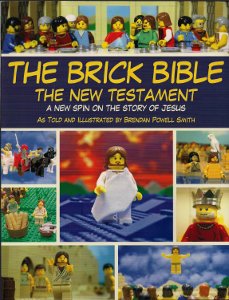
For others, I suppose some further explanation is warranted. Back in the fall of 2001 Brendan showed off his initial work to the LEGO community:
As he described it in that post, his Brick Testament is a LEGO illustration of the Bible. He immediately got a lot of feedback from the community, and as he added content to his site, he also got noticed by the mainstream press with newspaper and magazine stories, appearances on radio and television, and countless blog posts, tweets, forum discussions and the like (and one notable two part interview ;) ). Over the years, his work has led to at least seven print versions.
Brendan's work has not gone free of controversy. He is not personally a religious man, and one of his stated goals is to get people to reexamine the Bible, not just their vaguely-remembered Sunday School story version. He just takes the raw text and illustrates it in a pretty literal way. I won't do this here, but elsewhere (on Lugnet and on my GodBricks blog) I've taken issues with some of his interpretive choices. Brendan has always been gracious to discuss these differences, and I've enjoyed conversations with him over the years. Also, as he noted even in his first posting back in 2001, the Bible is full of violence and sex, and he has never shied away from illustrating this in LEGO form in the online version of his work. A year ago there was a little tempest in a tea pot when Sam's Club removed his books from their shelves due to complaints over that. I have elsewhere mocked that decision, but I do want to note here for anyone considering purchasing the Brick Bible for their kids, there are no plastic toy figures placed near each other in such a way as to suggest sexual situations in the print version (plastic toy violence is another thing altogether). So, if you are highly offended by plastic toy figures placed near each other in such a way as to suggest sexual situations (PTFPNEOISAWATSSS for short), have no fear. You can buy this book in peace. Now, if you are more concerned that his interpretation of certain Bible passages doesn't match yours, well, I may share your view, but that would also mean that you have to also keep a close eye on every other Biblical interpretation in popular media from Charlton Heston parting the Red Sea on to animated vegetables singing silly songs. The key is just to be an intelligent reader, and, if you are buying this for your kids, read along with them and discuss the stories.
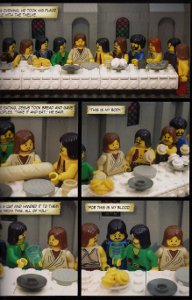
Now, I should spend a few minutes on this book, specifically. In large part it covers the same ground that you can find on his website, though with a different format (i.e. the website has single photos with text underneath, while this book version is laid out like a graphic novel, as you can see above). Several of the stories have been re-built and re-photographed (though not all - for example at one point the Magi are riding brick-built camels and at another Jesus tells how it is easier for a molded camel to go through the eye of the needle, so presumably the Magi photo is from before LEGO first produced the camel element in 2010). One striking difference is the lack of speech bubbles.

In the web version, Brendan uses black text in speech bubbles to indicate direct quotes from the Bible, but he sometimes has the characters make humorous asides, indicated by gray text. I kind of miss the speech bubbles and the side jokes, but I think I understand why Brendan did not include those in this. The other discrepancy between the print and web versions is simply in the choice of which material to include. Over half of the book is devoted to stories from the life of Jesus, which seems appropriate, but it seems that a third of the pages devoted to the book of Revelations seems out of scale. What's left on the cutting room floor is Brendan's treatment of the epistles of Paul, which are some of my favorite of his work.
That said, I highly recommend you get this book. Both religious and non-religious readers will enjoy the presentation. LEGO builders will particularly enjoy and appreciate seeing how Brendan translated different scenes into brick form.
MinilandBricks-specific content - Pretty much none. I suppose you could stretch it and say that his Statue of Liberty is roughly miniland scale.

I was very happy to get my copy of Brendan Powell Smith's latest work The Brick Bible: The New Testament, published by Skyhorse Publishing. Those in the online LEGO community are probably already aware of Brendan's 11 year old ongoing project, the Brick Testament, in both its online and print incarnations. To you, all I really need to say is that this is a beautifully produced paperback version including many of his New Testament stories, presented in a graphic novel style. Several of the stories have been re-built and re-photographed to update the stories reflecting newer LEGO figures, elements and colors, as well as Brendan's evolving building skills over a decade of work. There is also a Kindle version, but IMO if you're going to look at this on a screen, you're just going to go straight to his website. The huge benefit of this is that you can actually hold it in your hands and flip through the pages.

For others, I suppose some further explanation is warranted. Back in the fall of 2001 Brendan showed off his initial work to the LEGO community:
Hello, all.
I have embarked on a mammoth new project: interpreting the Bible in LEGO. I have plans for both Old and New Testament stories, but decided to start from the very beginning. I present to you the first fruits of my labor, six stories from the book of Genesis.
Enjoy, -The Rev. Brendan Powell Smith
As he described it in that post, his Brick Testament is a LEGO illustration of the Bible. He immediately got a lot of feedback from the community, and as he added content to his site, he also got noticed by the mainstream press with newspaper and magazine stories, appearances on radio and television, and countless blog posts, tweets, forum discussions and the like (and one notable two part interview ;) ). Over the years, his work has led to at least seven print versions.
Brendan's work has not gone free of controversy. He is not personally a religious man, and one of his stated goals is to get people to reexamine the Bible, not just their vaguely-remembered Sunday School story version. He just takes the raw text and illustrates it in a pretty literal way. I won't do this here, but elsewhere (on Lugnet and on my GodBricks blog) I've taken issues with some of his interpretive choices. Brendan has always been gracious to discuss these differences, and I've enjoyed conversations with him over the years. Also, as he noted even in his first posting back in 2001, the Bible is full of violence and sex, and he has never shied away from illustrating this in LEGO form in the online version of his work. A year ago there was a little tempest in a tea pot when Sam's Club removed his books from their shelves due to complaints over that. I have elsewhere mocked that decision, but I do want to note here for anyone considering purchasing the Brick Bible for their kids, there are no plastic toy figures placed near each other in such a way as to suggest sexual situations in the print version (plastic toy violence is another thing altogether). So, if you are highly offended by plastic toy figures placed near each other in such a way as to suggest sexual situations (PTFPNEOISAWATSSS for short), have no fear. You can buy this book in peace. Now, if you are more concerned that his interpretation of certain Bible passages doesn't match yours, well, I may share your view, but that would also mean that you have to also keep a close eye on every other Biblical interpretation in popular media from Charlton Heston parting the Red Sea on to animated vegetables singing silly songs. The key is just to be an intelligent reader, and, if you are buying this for your kids, read along with them and discuss the stories.

Now, I should spend a few minutes on this book, specifically. In large part it covers the same ground that you can find on his website, though with a different format (i.e. the website has single photos with text underneath, while this book version is laid out like a graphic novel, as you can see above). Several of the stories have been re-built and re-photographed (though not all - for example at one point the Magi are riding brick-built camels and at another Jesus tells how it is easier for a molded camel to go through the eye of the needle, so presumably the Magi photo is from before LEGO first produced the camel element in 2010). One striking difference is the lack of speech bubbles.

In the web version, Brendan uses black text in speech bubbles to indicate direct quotes from the Bible, but he sometimes has the characters make humorous asides, indicated by gray text. I kind of miss the speech bubbles and the side jokes, but I think I understand why Brendan did not include those in this. The other discrepancy between the print and web versions is simply in the choice of which material to include. Over half of the book is devoted to stories from the life of Jesus, which seems appropriate, but it seems that a third of the pages devoted to the book of Revelations seems out of scale. What's left on the cutting room floor is Brendan's treatment of the epistles of Paul, which are some of my favorite of his work.
That said, I highly recommend you get this book. Both religious and non-religious readers will enjoy the presentation. LEGO builders will particularly enjoy and appreciate seeing how Brendan translated different scenes into brick form.
MinilandBricks-specific content - Pretty much none. I suppose you could stretch it and say that his Statue of Liberty is roughly miniland scale.

Tuesday, November 6, 2012
Subscribe to:
Posts (Atom)
